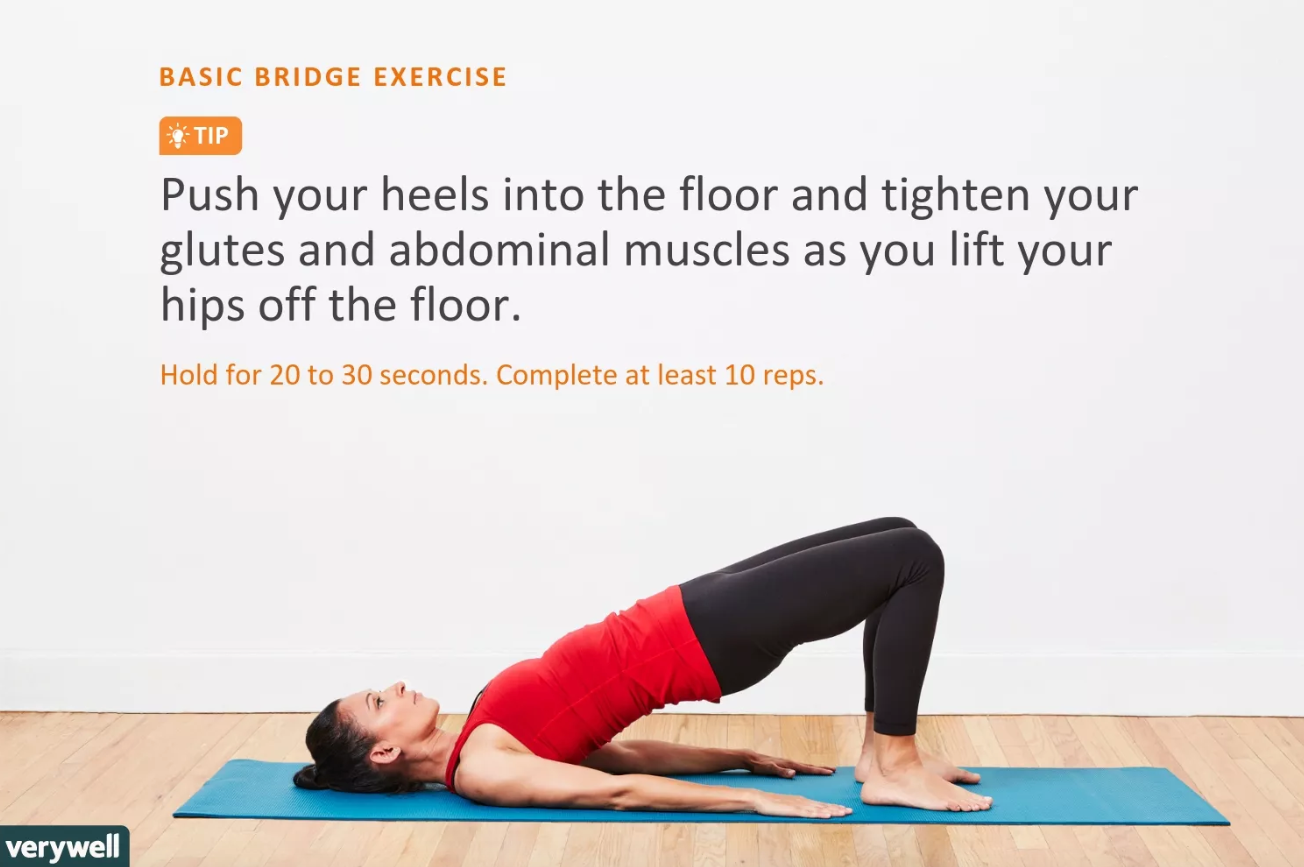Your legs go with you for every moment of your day, and your hips are a crucial component to making it all happen. Hip replacement surgery is a major event and we want to help offer some guidance. This article will focus on the basic facts of hip surgery and some pre-op exercises to get you started. Be sure to come back to get our post-op exercises and recovery tips!
Before we jump into learning more about hip replacement surgery, the process can be emotionally tough. There are common issues among patients post surgery but each individual’s experience is unique. Please discuss any issues or concerns you have with your doctor or physical therapist to ensure that you recover safely.
Facts about hip replacement surgery:
These days, hip replacements are a routine procedure in the US. In fact there are over 300,000 hip surgeries performed annually.
In hip replacement surgery or hip arthroplasty, part (or all) of your pelvis and femur are replaced to alleviate hip pain. Hip replacement surgery may also be used to treat issues relating to the hip such as injuries or growth pains that interfere with daily life activities; however, the majority of cases deal with hip arthritis.
There are also several types of hip replacement surgeries with the most common type of surgery being total hip replacement surgery (THR) where the ball and socket joints are replaced with prostheses and inserted into the femur (nearly 80% in 2017). Two other types of surgery include partial hip replacement surgery where the femoral head/ball joint is replaced (roughly 9% of all hip surgeries) and hip resurfacing for younger and more active patients (about 1% of all hip surgeries). Because hip prostheses do not necessarily last a lifetime, your doctor may want to replace part, or all, of your prostheses to reduce risks of future pain or complications. This is done in a procedure called revision hip replacement surgery (about 10% of all procedures).
The procedures only take a few hours. According to a report by the CDC, the average hospital stay after a total hip replacement surgery is roughly three to four days.
In 2010, there were 310,800 total hip replacements performed in the United States according to the CDC. Furthermore, the American Joint Replacement Registry released a report in 2017 stating that the gender distribution of primary (i.e. first time) hip surgeries were predominantly men. However, this trend reverses to a majority of women receiving the procedure as each decade of life progresses. Additionally, the mean age of primary hip replacement surgery is 66.6 years (+/- 10.2 years).
Pre-op exercises:
To get ready for your hip replacement surgery, your surgeon or physical therapist may recommend some exercises for strengthening the muscles around the hip. These exercises have been recommended by the American Academy of Orthopaedic Surgeons. They’re also great exercises for those interested in strengthening your hips and preventing injuries in your day to day life. Remember to stop any exercise that increases your pain level and consult your orthopedic surgeon and physical therapists for their recommended exercises and routines.
Although you may be walking or even returning to light activities within a few weeks or months, it’s important to recognize that recovery exists beyond the short term. One study noted that patients will see improvement in their ability to return to prior social activities for up to a year from their surgery date. Furthermore, a review of hip (and knee) replacement (and knee replacement) surgeries, as well as patient outcomes, found that major improvements occurred within a six-month period.
Some exercises include:
-
Straight leg raises - These are a simple exercise that strengthen the quads and the hip flexors. Lie flat on your back, plant one foot on the ground (with the knee bent); then, straighten your other leg, raise it about 12 inches up in the air, and slowly lower it. A variation you can add to your routine would be to hold your leg in the air for a few seconds before beginning to lower it back to the ground.

-
Clamshell - Lying on your side, bend your knees and place your feet one on top of the other. With the leg on top, raise your knee up a few inches, hold for a few seconds, and then bring your top leg down. (This exercise is also great for preventing IT Band Syndrome). There is an easy variation on this exercise that is done by straightening your top leg and raising it several inches above the ground, hold the position, and then bring down the leg (similar to the straight leg raises). You can always add a resistance band, placed above the knee, or ankle weights to enhance your workout. If you are interested in learning more about resistance bands, make sure you read the conclusion!

 (1)
(1) - Bridges - These help strengthen your lower back and your glutes. Similar to the straight leg raise, lie on your back but now bend both of your knees with the soles of your feet flat on the floor. Push off with your legs, raising your back into the air. Keep your back straight and abs tight. A popular way to approach this drill is to raise your back into the air, hold for a few seconds while squeezing the glutes, and then lower back down slowly.

- Standing hip abduction - For this exercise, stand up, plant your non-surgical leg on the ground, and balance yourself against a wall/counter/table. Then, slowly raise your surgical leg to the side (similar to the leg raise) as comfortably high as possible, hold for a second or two, then lower it. (Be sure to stand straight and not bend non-surgical hip as you raise your surgical leg). If necessary, add a resistance band around your calves or ankle weights to increase the difficulty of your exercise.
 (2)
(2)
If you’re interested in some more active workouts:
- Exercise/resistance bands are a great workout tool across all sports and can be used for all different muscle groups. They range in length, thickness, and resistance. They’re affordable (<$20). For these exercises, we recommend an article from Runner’s World.
- Leg cycle - Loop one end of the band to an immobile object (or make a knot) and then loop the other end to one of your ankles. Then, Face the anchored object and walk back until you begin to feel resistance. Put your weight on the non-banded leg (or balance with your arm). Begin the workout by driving your knee up (as if you are about to run) and then let your ankle/foot be pulled forward by the band. Once you make a 90-degree angle with your knee, bring your foot down make a sweeping/walking motion with your foot and allow your foot to go behind your anchor leg. Continue the drill by driving your knee up and repeating the motions. Repeat with the opposite side.
- Backwards leg cycle - Similar to the leg cycle, but you will now be facing in the opposite direction. Walk away from the wall until you begin to feel resistance in your banded leg. Then, drive up your knee until you make a roughly 90-degree angle and pull with your ankle/foot forward. Sweep down with your foot and then allow the band to pull your ankle/foot a few inches past your anchor leg and then repeat the motions again. Repeat with the opposite leg.
- Banded walk - Wrap the resistance band around your ankles and widen your feet until they are a little past your hips. Get into a quarter squat (slightly bent knees) and then walk forward while maintaining the weight in your feet.
- Banded side-step - Similar to the banded walk, but instead of walking forward, step to your side in one direction (widening past your hips) and then back in the other direction.
We hope we were able to share some helpful tips on good practices when it comes to hip replacement surgeries. Remember to always confer with your surgeon and physical therapist before beginning a new exercise regime, and to stop any exercise that exacerbates the pain of your injury. Let us know in the comments below what you wish you had known before your hip surgery!
- All Images are from VeryWell Fit
- Hip Conditioning - https://orthoinfo.aaos.org/en/recovery/hip-conditioning-program/
- Hip Exercise Program - https://www.stjoesannarbor.org/documents/Services/Total-Hip-Pre-Operative-Exercises.pdf
- Hip Strengthening with RW - https://www.runnersworld.com/training/a20821860/hip-strengthening-exercises/
- AL/PR/PI - https://www.sciencedirect.com/science/article/pii/S1063458411002408
- OHS Recovery Time - https://hqlo.biomedcentral.com/articles/10.1186/1477-7525-11-128
- Revision total hip - https://orthoinfo.aaos.org/en/treatment/revision-total-hip-replacement/
- HSS Hip Replacement Surgery - https://www.hss.edu/condition-list_hip-replacement.asp
- CDC - https://www.cdc.gov/nchs/products/databriefs/db186.htm
- http://www.ajrr.net/images/annual_reports/AJRR-2017-Annual-Report---Final.pdf
Written for Reboundwear® by Sean A Wang









Leave a comment
All comments are moderated before being published.
This site is protected by hCaptcha and the hCaptcha Privacy Policy and Terms of Service apply.